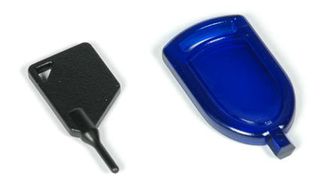RAID Boxes Run Riot
Storage Options: DAS, NAS, SAN
Having determined that you want redundant storage, you now have to select a suitable way of adding it to your system or infrastructure. The traditional way of adding storage to a system or a network is by installing a hard drive into a PC via parallel UltraATA and SCSI, or Serial ATA and SAS. Modern hard drives typically use the fast and easy-to-use Serial ATA interface; professional systems rely on SCSI or Serial Attached SCSI (SAS). Any hard drive works, as long as you get the interface that matches your controller. Yet there are differences in performance and qualification for permanent operation (24/7) that you should take into account carefully. Warranties and specifications may differ.
Adding a storage device to your system externally is an increasingly popular alternative. External storage can be hooked up via the Universal Serial Bus (USB 2.0), which every computer offers, or via IEEE1394, a.k.a. Firewire. Firewire is less popular, but it holds its ground against other solutions as the dominating interface in the world of isochronous video transfer. You can find plenty of USB 2.0 and/or Firewire storage solutions at any retailer.
But the typical storage interfaces SATA and SAS also have found their way outside the PC: eSATA allows attaching single drives to a PC from the outside, and SAS even allows you to hook up huge storage boxes using multi-lane cable connections. While eSATA and SAS are considerably faster than USB 2.0 or Firewire, all of these interfaces are called DAS or Directly Attached Storage, because you add storage directly to an existing solution.
One popular alternative is NAS, or Network Attached Storage. In this case the storage solution offers a networking interface and allows multiple clients to access data flexibly. NAS solutions scale quite a bit, meaning that there are single-drive NAS boxes with little configuration and administrations options, multi-drive NAS solutions or high-end rackmount NAS modules, which can be powered by fully featured PCs with highly specialized operating systems. NAS offers a huge advantage in that it utilizes existing networking infrastructure (wired or wireless). But depending on the particular solution, it may or may not scale well enough to upgrade storage capacity.
In such a case, we're already stepping into enterprise storage, where flexibility and scalability are even more important. While it is normal to find heterogeneous storage solutions, the dominating buzzword is SAN or Storage Area Network. In a SAN, existing network infrastructure is used to encapsulate storage protocols into it. The best example is iSCSI, which runs a slightly modified SCSI protocol over Ethernet to access so-called iSCSI Targets (storage) via a host system (initiator). SANs may utilize DAS and sometimes even NAS for storage targets.
The solutions this article talks about clearly are DAS products, and they cater to the storage hungry power user or to small and medium businesses (SMBs).
The Products

Real keys have been replaced by allen keys or similar mechanisms to lock the drive trays.
Stay on the Cutting Edge
Join the experts who read Tom's Hardware for the inside track on enthusiast PC tech news — and have for over 25 years. We'll send breaking news and in-depth reviews of CPUs, GPUs, AI, maker hardware and more straight to your inbox.
Both products are external storage boxes or so-called appliances. They consist of simple but solid metal enclosures, with drive bays and trays in the front and interfaces on the back. Both utilize fans to cool the power supply and the drives. easyRAID offers USB 2.0 and Firewire 800 (1394b) as well as a serial port, which is necessary for software updates. There are separate system and power supply fans and DIP switches to configure the RAID mode. The Sans Digital device has a USB 2.0 and an eSATA interface, and you have to use the front control panel to configure it.
Current page: Storage Options: DAS, NAS, SAN
Prev Page RAID Boxes: Powerful, But Noisy Next Page EasyRAID S4-FWTTMost Popular

